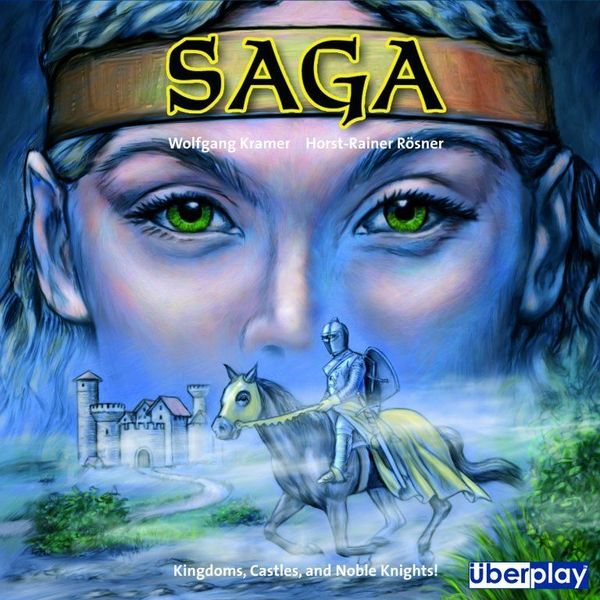Saga (2004) Board Game
Saga is a board game released in 2004 that is designed for 2-4 players. It is a card game that incorporates elements of fighting and medieval themes. The game is designed by Anke Pohl, Thilo Rick, and Bernd Wagenfeld, and features artwork from 999 Games, KOSMOS, and Überplay. Saga falls under the categories of card game, fighting, and medieval, and includes gameplay mechanics such as area majority/influence, hand management, open drafting, set collection, and take that.
Game Components of Saga
How To Setup Saga
To set up the game, each player receives a set of knight cards. A pile of tokens for fame points is placed near the board. Six Kingdom cards, one for each color, are laid out face up. Each castle is defended by two knights, one matching the castle’s color and the other of a different color. Players choose who goes first, and play proceeds clockwise.
Gameplay Mechanics and Game Objective
Mechanics
Objective
Player Experience
Playing Saga is an exercise in strategic planning and timing. The game appears simple at first glance but quickly reveals its depth as players need to decide when to attack castles, which castles to target, and how to manage their knight cards effectively. The special abilities on the knight cards add a layer of complexity, as does the decision to take free agents, which can be both beneficial and costly.
Pros
Cons
Personal Thoughts on Saga
Saga is for players who enjoy strategic area control games with a unique twist. It is ideal for those who appreciate games that demand careful planning and adaptability. While it may not be the best fit for casual gamers due to its complexity and potential for a runaway leader, it is a great choice for those looking to challenge themselves and explore different strategies.
We are supported by our audience. When you purchase through links on our site, we may earn an affiliate commission, at no extra cost for you. Learn more.

